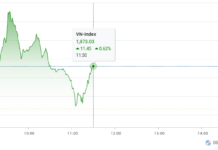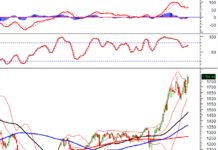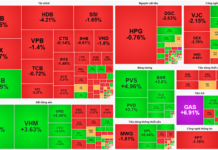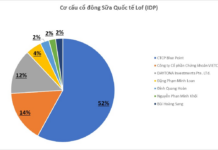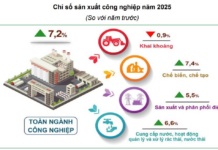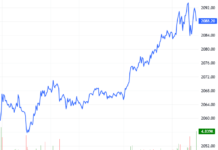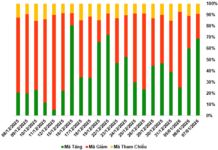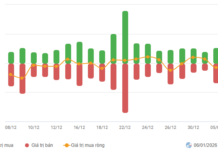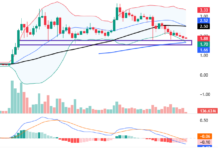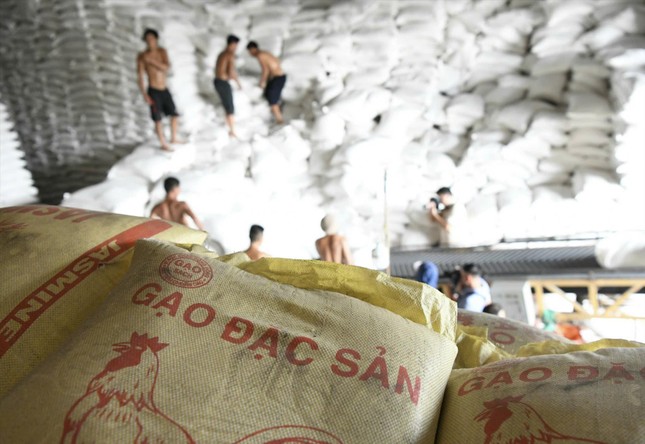Rice prices rise against the trend in other countries
Information from the Vietnam Food Association (VFA) shows that, up to now, Vietnamese rice prices are increasing compared to those of Thailand and Pakistan. Vietnamese exported rice with 5% broken rice grains is being traded at $575/ton, $14/ton higher than that of Thailand, and $34/ton higher than that of Pakistan.
Similarly, Vietnamese 25% broken rice is also up to $539/ton, higher than that of Thailand and Pakistan by $27/ton and $22/ton, respectively. Among the top rice-exporting countries in the world, Vietnamese rice currently has the highest price. This is also an impressive comeback for Vietnamese rice, as just a month ago, our export rice prices were lower than those of Thailand, Pakistan, and Myanmar. Especially after winning the bid to export hundreds of thousands of tons of rice to Indonesia thanks to low bids in June, Vietnamese rice prices continuously dropped sharply, reaching the lowest level in the world.
Talking to the Tien Phong newspaper, Mr. Nguyen Van Don, Director of Viet Hung Company (Tien Giang province), said that in the past half month, the company has continuously exported batches to the Philippines market, with the volume increasing by more than 30% compared to July.
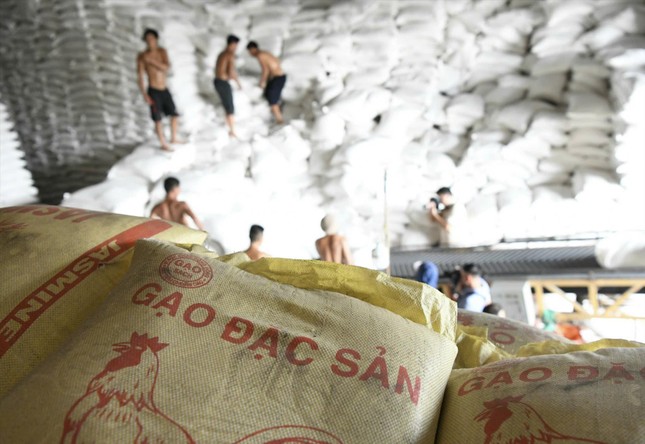
Vietnam has many high-quality rice varieties, giving exported rice a price advantage. Photo: Nhu Y
According to Mr. Don, usually, the last few months of the year are when countries increase their rice imports. Especially this year, the two largest rice-consuming markets for Vietnam, the Philippines and Indonesia, both announced increases in rice imports.
Accordingly, the Philippines increased its rice imports from 4.2 million tons to 4.5 – 4.7 million tons. Meanwhile, Indonesia said it could import up to 4.3 million tons of rice instead of 3.6 million tons as announced at the beginning of 2024. The reason is that the country’s rice production from the beginning of the year to August is 9.5% lower than that of the same period last year.
Explaining the comeback of Vietnamese rice prices, Mr. Don said that the Philippines’ reduction of rice import tax from 35% to 15% has encouraged businesses in this country to increase imports compared to before. Meanwhile, in our country, the summer-autumn crop is about to end, and we are preparing to enter the autumn-winter crop. Neither of these two seasons is the main crop of the year, so the output is not large, pushing rice prices up.
Currently, Vietnamese rice has many varieties that are rated as top quality in the world. For example, Vietnam has a set of short-day fragrant rice varieties, which can be grown 2-3 times a year with high yield and sticky, fragrant rice. This is a set of varieties that large rice-producing and exporting countries such as India and Thailand do not have.
Mr. Nguyen Viet Anh, General Director of Phuong Dong Food Joint Stock Company, said that the demand for rice in the market has been maintained at a high level, and the fluctuation in rice prices is partly affected by seasonality. Previously, Vietnamese enterprises were willing to offer low prices to win bids because the rice supply was purchased and stored from the beginning of the year, when Vietnam was in the main crop season, so the purchasing price was also cheaper. At this time, when the supply is limited, and countries are accelerating imports to prepare for next year’s drought season, rice prices are pushed up.
Mr. Viet Anh predicted that Vietnam’s rice exports would continue to stabilize and prices would remain high until the end of this year if India does not lift its rice export ban to stabilize domestic food security.
Forecast to set a new record of over $5 billion
Statistics from the Vietnam Food Association show that in the first seven months, Vietnam exported over 5.1 million tons of rice, with a turnover of $3.2 billion, up 25% in volume and 5.8% in value compared to the same period last year.
The average export price of Vietnamese rice is currently very high. There were times when the export price of Vietnamese rice to Brunei reached $959/ton, to the US $868/ton, the Netherlands $857/ton, Ukraine $847/ton, Iraq $836/ton, and Turkey $831/ton…
Mr. Nguyen Ngoc Nam, Chairman of the Vietnam Food Association, said that the demand for rice imports from traditional customers of Vietnamese rice such as the Philippines, Indonesia, Ghana, Malaysia, and Singapore continues to be maintained at a high level. Along with that, rice export enterprises are also actively expanding to new markets such as the Middle East, Africa, South America, Japan, and South Korea… With the increasing import momentum of partners, Mr. Nam said that Vietnam’s rice exports this year may reach about 8 million tons, earning more than $5 billion – a new record for the industry.
Deputy Minister of Agriculture and Rural Development Phung Duc Tien said that from the beginning of the year to now, rice is the 5th largest export commodity in the agricultural sector (after wood and wood products, seafood, vegetables, and fruits, and coffee); at the same time, it is also one of the commodities with a high growth rate.
According to Mr. Tien, currently, Vietnamese rice has many varieties that are rated as top quality in the world. For example, Vietnam has a set of short-day fragrant rice varieties, which can be grown 2-3 times a year with high yield and sticky, fragrant rice. This is a set of varieties that large rice-producing and exporting countries such as India and Thailand do not have.
More importantly, this set of varieties helps Vietnam position a new segment of rice in the world market, which is short-day fragrant rice with high yield and good quality. This is one of the important factors to help increase the export price of Vietnamese rice in the world market, surpassing Thailand, Pakistan, and India.
To promote rice exports in the last months of the year, the Ministry of Agriculture and Rural Development will continue to coordinate with the Ministry of Industry and Trade, provinces, and cities to organize a conference to evaluate the situation of domestic rice production and export, and at the same time, speed up the implementation of the project on 1 million hectares of high-quality rice, focusing on removing difficulties for exporting enterprises.

